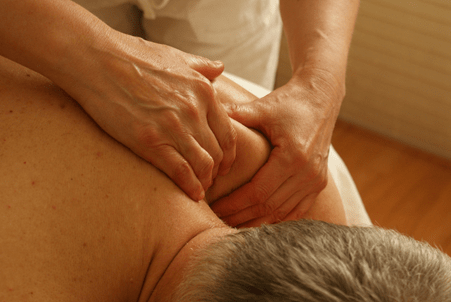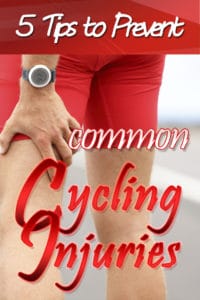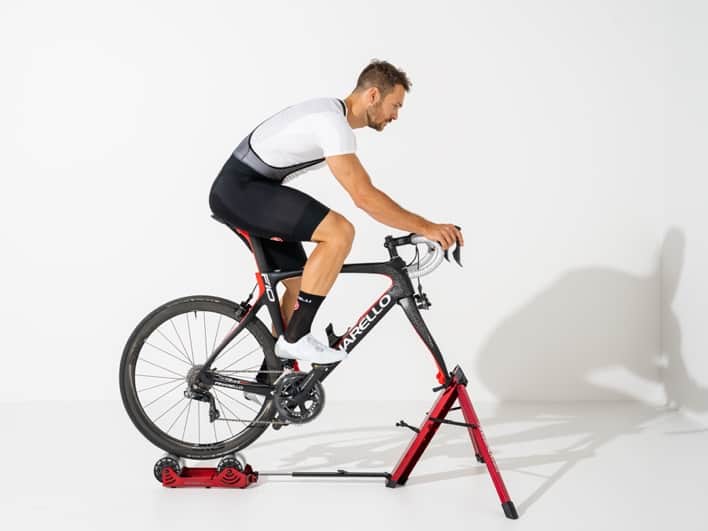- The Ultimate Guide to Women’s Specific Bikes - October 5, 2021
- Top Road Bikes Under $1000: Grab More Speed for Less Cash - October 5, 2021
- Get Fast! 8 Top Carbon Fiber Road Bikes Under $2,000 - October 5, 2021
There’s nothing worse than having to take forced time off the bike because you’re injured. Fortunately many common cycling injuries are preventable. Spend more time in the saddle and less on the couch by following a few simple tips and guidelines.
Skip Stretching
It’s always a good idea to warm up before hitting the bike. But not all warm ups are created equal. Before jumping into your first interval, it’s advisable to slowly begin moving your joints and bringing your body temperature up. Light dynamic activity (think slowly moving through different ranges of motion, as opposed to static stretching) prepares the body for the work to come.
Surprising the body with a sudden movement or lifting weight it’s not prepared for sets you up for an injury, as does static stretching. Holding a stretch is fine if you notice a tight muscle after exercise or after sitting all day.
When done before exercise, however, it can cause muscles to become lax and overstretched. This makes muscles less able to protect joints during explosive movements or when you bring your body into a range of motion it’s not comfortable and competent in. Studies also show that static stretching can inhibit muscle strength and performance. Being flexible is only beneficial if you can control that range of motion.
Maintain Your Tissue

So what about a foam roller? As a massage therapist, I’m fine with clients using foam rollers at the appropriate time. When used as part of a treatment plan, a foam roller can be a very beneficial tool to help loosen up restricted muscles before a workout. However, I see athletes digging into tender spots like the IT band, which can become irritated easily, in favor of enlisting the help of a professional to identify why the IT band is so tight in the first place.
Medium-density muscle roller is comfortable to use - making it easy for beginners, but still effective at penetrating the soft tissue layer of tired muscles. Soft enough to use while in pain from a lower back injury, sciatica, or plantar fasciitis.
Focus on Fit
An ill-fitting bike is a major cause of cycling injuries. Since you’re strapped into the machine, be sure it’s properly adjusted to fit your body. Be meticulous about fit and don’t be afraid to adjust it incrementally over time. Remember that fit is dynamic: your body is always changing, so is your fit. The same goes for things like cycling shoes. Plus, the more comfortable you are on the bike, the better you’ll perform.
Nothing is really more important for creating a great cycling experience than matching yourself---your body, your goals, and your dreams---to the right bike.
Do Other Things
Cycling trains the body in one position. This is great for becoming a stronger cyclist, but not so good for preventing injuries or developing strength for other movements and to accomplish your daily tasks without risking injury.
Include other activities in your weekly plan that strengthen the back of the body (think glutes, spinal stabilizers, hamstrings and calves). Also side-to-side transverse plane movements are essential, as is functional core work.
Follow a Plan….But Also Know When to Ditch It
Does this scenario sound familiar? It’s January 1st and you’re pumped to begin a new resolution to lose weight and spin more. So you hit the spin studio, despite having taken a month off, and hit it hard! Or maybe you sneak in an extra class or two.
Whenever there’s a sudden shift in intensity or duration, you run the risk of developing an overuse injury. This is why it’s important to follow the structure of a class or enlist the help of a coach to set up a progressive training plan.
The most important thing to remember is to always listen to your body. Even if you’re in a class, it’s important to pay attention to that aching knee or dial down the intensity if your low back starts aching. When your form suffers, you won’t get as many benefits from the workout anyway. It’s best to rest and return stronger.
Final Thoughts
Rethinking your warmup, learning to listen to your body and enlisting the help of a professional can have incredible, positive impacts on your body and cycling performance. A little forethought and planning ahead can go a long way to increase your cycling longevity. Plus, feeling good and taking care of your body translates into getting fit and fast on the bike. Here’s to your best season yet!
Related: The Best Foam Roller To Up Your Recovery Game, How to Lose Weight Cycling: Simple Hacks for Weight Loss



